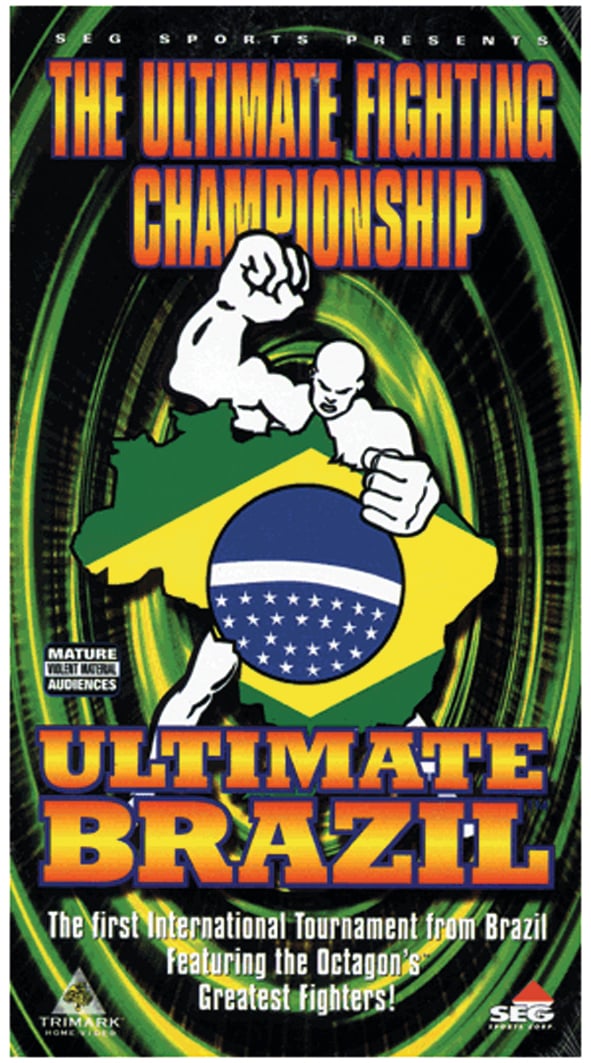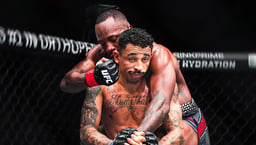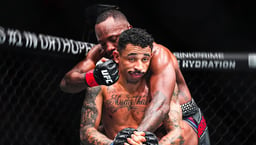
Issue 079
September 2011
Almost 13 years ago the Ultimate Fighting Championship hit Sao Paulo for the first time – but it very nearly didn’t happen
Vitor Belfort lands a one-two combination that stops Wanderlei Silva in his tracks. Smelling blood, ‘The Phenom’ unloads video-game style, running to keep up as his lightning fast punches propel Wand the full span of the cage. Finally, the fence ends the chase and referee ‘Big’ John McCarthy intervenes as Silva slumps to the canvas under fire. Arms aloft, Belfort acknowledges the acclaim of the Sao Paulo crowd. The UFC’s bright young Brazilian star has made a triumphant homecoming.
From a distance, Ultimate Brazil (also known as UFC 17.5) doesn’t seem so dissimilar to the way things are today: the UFC taking their talent on the road to open up new markets. The reality was very different. In 1998, the Ultimate Fighting Championship looked to be on its last legs. Viewing figures were down to around 10% of what they had been in the beginning. Those seduced by the original, over-the-top spectacles had drifted away and a new wave of fans had not replaced them. As well as pay-per-view buyers, another group of people had been attracted by the blood-splattered trailers of the early ‘90s: the politicians. Unlike the rubberneckers, they had stuck around. They made it their business to try to stamp out the ultimate fighting menace – and business was good. By 1998, the UFC was an outlaw outfit, forced to tour its act round the handful of states in the American deep South that would allow them in.
Then-owner Bob Meyrowitz and his Semaphore Entertainment Group (SEG) were sure there was a future for their product, but they needed a way to get the word out before the slump became terminal. Wanting to create a renewed buzz, the media men decided to give the UFC a more colorful backdrop.
Ultimate Brazil took place at the Ginásio da Portuguesa in Sao Paulo on October 16th 1998. As was common in the SEG period, the lead-up to the event was a study in chaos. The UFC’s initial contact in Sao Paulo was Mario Yamasaki, a well-known name on the local jiu-jitsu scene and later a regular official for the promotion, then an events organizing company were drafted in to put the show together. An inaccurate representation of the Brazilian flag on the Ultimate Brazil logo was an early symptom that things were not going well. With just a couple of weeks left before show time, poor organization (such as no fighter transportation) left the event in jeopardy and Yamasaki stepped in to save the date. Supported by a network of family and friends, it was Mario Yamasaki who made sure that Ultimate Brazil went ahead.

The card and the format were indicative of the state of the UFC. The open-weight tournament formula of the early days was being replaced by something more recognizable as a sport. Weight classes were a key step on the road to acceptance and Ultimate Brazil featured single bouts for the middleweight (under 200lb) and lightweight (under 170lb) titles. There was also a bout under the banner of ‘Road to the Heavyweight Title’ – a series of contests designed to find a successor to the recently departed champion Randy Couture.
On the night, the fights were a mixed bag. Pat Miletich made history when he became the first-ever UFC lightweight (now welterweight) champion after a split decision win over the Mikey Burnett. The fight was also notable for containing virtually no action during the 21 tedious minutes it lasted. Tank Abbott had been a stalwart of the promotion and his no-nonsense approach had made him a fan favorite, but the progression of MMA meant there was no longer a place for a guy who spent more time at the bar than in the gym. On numerous occasions, the rotund brawler bent with his hands on his knees sucking up air before he was clinically dispatched by Pedro Rizzo. One man definitely in tune with the new era was Frank Shamrock. By advocating cross training and accepting the importance of conditioning, Shamrock was showing the way forward. In Sao Paulo, he put on a polished performance to retain the middleweight title against John Lober.
While Tank Abbott would leave the promotion after the event, but it would be wrong to think that Ultimate Brazil was a major turning point in the development of modern MMA. It was a snapshot of a company in decline. Frank Shamrock would follow Tank out of the door after one more fight – his classic war with Tito Ortiz at UFC 22 in Lake Charles, Louisiana. Six months after dropping Wand, Vitor Belfort would make his Pride debut. The UFC were going broke. Everyone knew it and there was a scramble for the lifeboats. At the same time, Pride was entering its stadium-filling golden age. SEG limped on for another couple of years, even putting on their own Japanese shows in the hope of cashing in on the Oriental boom, before giving up after UFC 28 in December 2000 – a Tokyo show that attracted only 1,414 spectators. The foreign strategy that Ultimate Brazil had been part of had failed.
In the cage, Ultimate Brazil delivered some decent entertainment. The likes of Vitor Belfort and Frank Shamrock were living proof that the UFC had moved on light years from the excesses of the early period. What had begun as a cable TV curiosity was now a clearly a fully functional, exciting sport. All that was needed now was a group of people who were capable of packaging it in a way that would appeal to the masses.










